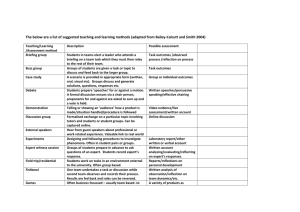
Study skills
The DIEP strategy The DIEP strategy The four steps in this approach (adapted from Boud, D , Reflection: Turning Experience into Learning) are to describedescribedescribe, interpret interpretinterpret, evaluate evaluateevaluate and plan planplan 30/11/ · The ERA cycle (Jasper, ) is one of the most simple models of reflection and contains only three stages: Experience Reflection Action The cycle shows that we will start with an experience, either something we have been through before How to use DIEP Use the DIEP process to guide your reflective writing and help you stay focused and on task. Expand all sections Describe 1. Describe the insight An insight is something new that you learned or realised. The insight must be relevant to the course and ideally could change your thinking or behaviour in the future
Independence
This guide uses the DIEP strategy adapted from Boud, Reflection: Turning Experience into learning (). The 4 steps to reflection are to (1) Describe, (2) Interpret, (3) Evaluate and (4) Plan. The DIEP strategy D – Describe objectively what happened: Reflect on the experience. Answer the question: ‘What did I do, read, see, hear, etc?’ The DIEP strategy The DIEP strategy The four steps in this approach (adapted from Boud, D , Reflection: Turning Experience into Learning) are to describedescribedescribe, interpret interpretinterpret, evaluate evaluateevaluate and plan planplan 07/08/ · Writing a reflective document: The DIEP framework. DIEP:= Describe -> Interpret -> Evaluate -> Plan. D-Describe. Describe objectively what you learned from the incident; Respond to the question: “What did I observe, hear, and learn from the incident?” I-Interpret. Explain your personal interpretation of the learning you DESCRIBEDEstimated Reading Time: 2 mins

Reflecting on practice
The DIEP strategy The DIEP strategy The four steps in this approach (adapted from Boud, D , Reflection: Turning Experience into Learning) are to describedescribedescribe, interpret interpretinterpret, evaluate evaluateevaluate and plan planplan Using the DIEP model. When writing reflectively for the first time, it’s not uncommon to produce a summary or description of the event or experience without deeply reflecting on it. Reflective writing needs to go beyond simply summarising what happened The scientifically based diep competence model is therefore the starting point for the composition of the supervisory board. In this way, possible gaps in competencies and suitable candidates can be systematically identified

Getting started at uni
The DIEP strategy The DIEP strategy The four steps in this approach (adapted from Boud, D , Reflection: Turning Experience into Learning) are to describedescribedescribe, interpret interpretinterpret, evaluate evaluateevaluate and plan planplan Using the DIEP model. When writing reflectively for the first time, it’s not uncommon to produce a summary or description of the event or experience without deeply reflecting on it. Reflective writing needs to go beyond simply summarising what happened The scientifically based diep competence model is therefore the starting point for the composition of the supervisory board. In this way, possible gaps in competencies and suitable candidates can be systematically identified

Video tutorial
This guide uses the DIEP strategy adapted from Boud, Reflection: Turning Experience into learning (). The 4 steps to reflection are to (1) Describe, (2) Interpret, (3) Evaluate and (4) Plan. The DIEP strategy D – Describe objectively what happened: Reflect on the experience. Answer the question: ‘What did I do, read, see, hear, etc?’ Using the DIEP model. When writing reflectively for the first time, it’s not uncommon to produce a summary or description of the event or experience without deeply reflecting on it. Reflective writing needs to go beyond simply summarising what happened The scientifically based diep competence model is therefore the starting point for the composition of the supervisory board. In this way, possible gaps in competencies and suitable candidates can be systematically identified
No comments:
Post a Comment